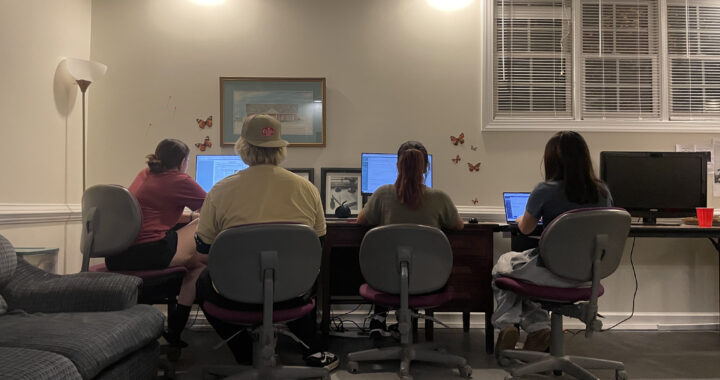An inside look at the unrealistic advertising nature of Victoria’s Secret
3 min read
By AMANDA MOTLEY
I can still remember the first time I entered a Victoria’s Secret. I was 16 and finally had a job that meant freedom to go shopping on my own. My friends and I would spend hours at the mall and by far one of my favorite places to browse was Victoria’s Secret.
I guess I should start out by saying that I am what America considers “plus-sized,” and as a plus-sized teen I often found myself going into Victoria’s Secret and walking out empty handed.
I gave up on shopping there until a woman who was working in the dressing room helping my petite best friend in and out of various pieces of gorgeous lingerie said to me, “Why aren’t you trying on anything honey?” I stared at her and responded with something along the lines of, “I don’t really fit into the stuff that looks my age.”
She scoffed and looked me square in the eye for what seemed like minutes. She then went to the drawer and pulled out a bra extender. It was one of the most humiliating things ever for a 16-year-old, but I soon found that meant nothing to me, and I was no longer embarrassed. I used the extender and it was still a little snug, but I got the bras and was happy.
Fast forward a few years later and I found myself an employee of Victoria’s Secret, surrounded by beautiful lacquered drawers and sparkly pieces of lingerie; I was in heaven. My job meant helping men and women pick out various pieces of lingerie, an experience I found very rewarding.
However, I soon realized that I was not the only person who felt like Victoria’s Secrets sizes were not applicable to the average-to-plus-sized woman. Women of all shapes and sizes came in and out of the store, only to walk out empty handed. One of the most puzzling customers was a woman who was 5’5’’ and was a size 6. Her small frame combined with a large bust size made it almost impossible for me to help fit her into anything. I felt humiliated for her.
During my time at Victoria’s Secret there was also a marketing ploy that made us push a new bra selling tool called the “sister size.” We were told to inform women that if their actual size was not available in store then they could go up a cup size and lose a band size. For me, being a 38 C meant I could become a 36 D. It seems brilliant; make the consumer think they are smaller than they actually are.
In a more recent marketing campaign, Victoria’s Secret came out with “the perfect body.” This was a clever play on words for one of their best selling bra sections, “The Body by Victoria.” Obviously, the campaign was plastered with beautiful and skinny models, sending the message that this is the perfect body.
This is an ironic message considering the average American women in a size 14. No wonder there are so many people in an outrage. One of the solutions is to simply say, “OK, so the clothes don’t fit you. Lose weight or go somewhere else.” But Victoria’s Secret holds one third of the entire lingerie market, a fact that as a former employee of the retailer was drilled into my head.
Recently, they changed the campaign to “A body for everybody,” but that was an even bigger mistake. How can the company say “A body for everybody” when women of all shapes and sizes can walk into the store and find that it doesn’t have a DDD bra or that if you are a size XL you can only truly shop in the more modest section of the store.
I believe that Victoria’s Secret should work harder to create a model and size representation of all the diverse body types we have in the world. I am not just limiting this to plus sizes. They should work harder to manipulate the market so that a broader representation is available to customers. A company that promotes sexiness should promote healthiness as a whole, not just a market for supermodel skinny.











